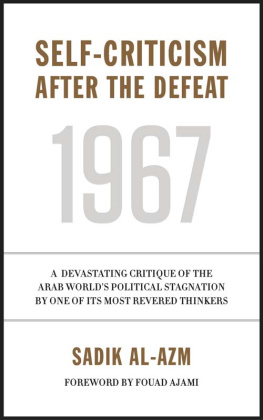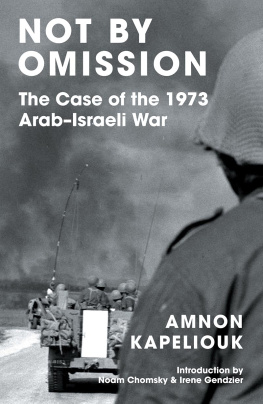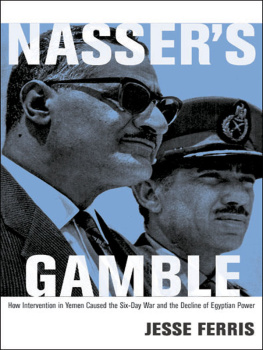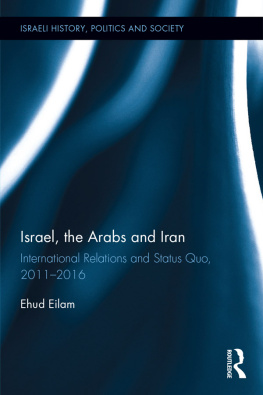Umm Kulthm
LAURA LOHMAN

Umm Kulthm
ARTISTIC AGENCY AND THE SHAPING
OF AN ARAB LEGEND, 19672007

WESLEYAN UNIVERSITY PRESS
Middletown, Connecticut
WESLEYAN UNIVERSITY PRESS
Middletown, CT 06459
www.wesleyan.edu/wespress
2010 Laura Lohman
All rights reserved
Manufactured in the United States of America
Portions of this book appeared previously in a different form as The Artist of the People in the Battle: Umm Kulthms Concerts for Egypt in Political Context, in Music and the Play of Power in the Middle East, North Africa, and Central Asia, ed. Laudan Nooshin, Ashgate Press, 2009, and Preservation and Politicization: Umm Kulthms National and International Legacy, Popular Music and Society 33 (1), 2010, http://www.informaworld.com .
Wesleyan University Press is a member of the Green Press Initiative. The paper used in this book meets its minimum requirement for recycled paper.
Library of Congress Cataloging-in-Publication Data
Lohman, Laura, 1974
Umm Kulthm : artistic agency and the shaping of an Arab legend, 19672007 /
Laura Lohman.
p. cm. (Music/culture)
Includes bibliographical references and index.
ISBN 978-0-8195-7071-0 (cloth : alk. paper)
1. Umm Kulthum, 18981975. 2. SingersEgyptBiography. I. Title.
ML420.U46L65 2010
782.42163092dc22
[B] 2010023311
5 4 3 2 1
We gratefully acknowledge the assistance of the AMS 75 PAYS Endowment of the American Musicological Society.
To my parents
Contents

Illustrations

Figures
Musical Examples
Acknowledgments

The research for this book was made possible by the generous financial support of several organizations. The National Endowment for the Humanities funded my research in Egypt through a fellowship at the American Research Center in Egypt. A Jacob K. Javits Graduate Fellowship from the U.S. Department of Education supported the early research that I conducted in the United States. A faculty stipend from California State University, Fullerton, assisted in my later research and writing. Although the views, findings, and conclusions expressed in this book do not necessarily represent those of the organizations that funded my research, I am especially grateful for their financial support.
In Egypt, I benefited greatly from the insight, assistance, and patience of the many journalists with whom I spoke. I am indebted to Farq Ibrhm for his generosity in sharing his time, knowledge, and exquisite photographs. I am grateful to Mu ammad Wajd Qandl, Mu
ammad Wajd Qandl, Mu ammad Tabrak, Aff Ya
ammad Tabrak, Aff Ya y, Mu
y, Mu ammad
ammad  li
li , Mu
, Mu ammad Salmw, and
ammad Salmw, and  asan Rajab for the insights they shared in their many helpful interviews. A
asan Rajab for the insights they shared in their many helpful interviews. A mad al-
mad al- aghr at Akhbr al-Yawm gave invaluable assistance in gaining access to many of these writers and photographers. Nadia Lu
aghr at Akhbr al-Yawm gave invaluable assistance in gaining access to many of these writers and photographers. Nadia Lu f at al-Ahrm and the staff at Dr al-Hill and Idhah wa al-Tilfizyn generously provided essential aid in utilizing publishing house archives.
f at al-Ahrm and the staff at Dr al-Hill and Idhah wa al-Tilfizyn generously provided essential aid in utilizing publishing house archives.
Outside these publishing houses, I received help from many other individuals in Egypt. A mad Antar, director of the Umm Kulthm Museum, helped me obtain numerous audio-visual records, provided valuable insight on her rarely heard songs, and granted me generous access to the museums collections. In addition, I thank Umm Kulthms stepson, Mu
mad Antar, director of the Umm Kulthm Museum, helped me obtain numerous audio-visual records, provided valuable insight on her rarely heard songs, and granted me generous access to the museums collections. In addition, I thank Umm Kulthms stepson, Mu ammad
ammad  asan al-
asan al- ifnw, along with Nabl Shrah and Wajd al-
ifnw, along with Nabl Shrah and Wajd al- akm, for their helpful discussions. My research in Egypt would not have been possible without help from the entire staff at the American Research Center in Egypt. Special thanks go to Jere Bacharach, Amrah Khattab, Amr Abd al-
akm, for their helpful discussions. My research in Egypt would not have been possible without help from the entire staff at the American Research Center in Egypt. Special thanks go to Jere Bacharach, Amrah Khattab, Amr Abd al- amd, and Amrah Jaml.
amd, and Amrah Jaml.
Many individuals offered invaluable assistance during the lengthy and challenging process of gaining access to the archives of the Egyptian State Radio and Television Union. In particular, I offer heartfelt thanks to Charles Dibble and Ysuf Sharf Rizq Allh, the former president of Nile Television, for their help in gaining permission to utilize the resources of the state television archives. I also thank Nabl U hmn, chairman of State Information Services, for his help in accessing valuable audio recordings and video footage.
hmn, chairman of State Information Services, for his help in accessing valuable audio recordings and video footage.
In the United States, I also have many to thank. I express my gratitude to Carol Muller and Scott Marcus, in whose stimulating seminars I first formulated and explored the idea behind this book. I also thank Dwight Reynolds, who provided a helpful forum for presenting and discussing my early research. I am indebted to the late Eugene Wolf for his model of meticulous scholarship and professionalism. At Wesleyan University Press, I owe many thanks to Parker Smathers, the series editors, and the anonymous readers, all of whom offered critical insight and guidance. Finally, I thank my parents for their unwavering support during the challenging times spent researching and writing this book.
Note on Transliteration

In transliterating Arabic, I have generally followed the system adopted by the American Library Association and the Library of Congress. I represent one Arabic consonant differently. Instead of using the symbol  to represent the consonant pronounced like the th in though, I use the symbol
to represent the consonant pronounced like the th in though, I use the symbol  I have used this system of transliteration for most persons names, including those of well-known figures such as Jaml Abd al-N
I have used this system of transliteration for most persons names, including those of well-known figures such as Jaml Abd al-N ir. For well-known place names and organizations, however, I have used accepted English spellings, such as Beirut, Cairo, and Fatah. In references to titles of non-Arabic sources, I have retained the spelling of Arabic names used in the original documents. Thus, while in the body of the text I use Umm Kulthm, references to titles of English and French sources include various original spellings such as Oum Kalthoum, Om Kalthoum, and Umm Kolthoum. When referring to Arab authors who have published work in English or French, I have adopted their preferred nonstandard transliterations of their names.
ir. For well-known place names and organizations, however, I have used accepted English spellings, such as Beirut, Cairo, and Fatah. In references to titles of non-Arabic sources, I have retained the spelling of Arabic names used in the original documents. Thus, while in the body of the text I use Umm Kulthm, references to titles of English and French sources include various original spellings such as Oum Kalthoum, Om Kalthoum, and Umm Kolthoum. When referring to Arab authors who have published work in English or French, I have adopted their preferred nonstandard transliterations of their names.
Next page









 ammad Wajd Qandl, Mu
ammad Wajd Qandl, Mu li
li asan Rajab for the insights they shared in their many helpful interviews. A
asan Rajab for the insights they shared in their many helpful interviews. A f at al-Ahrm and the staff at Dr al-Hill and Idhah wa al-Tilfizyn generously provided essential aid in utilizing publishing house archives.
f at al-Ahrm and the staff at Dr al-Hill and Idhah wa al-Tilfizyn generously provided essential aid in utilizing publishing house archives. to represent the consonant pronounced like the th in though, I use the symbol
to represent the consonant pronounced like the th in though, I use the symbol  I have used this system of transliteration for most persons names, including those of well-known figures such as Jaml Abd al-N
I have used this system of transliteration for most persons names, including those of well-known figures such as Jaml Abd al-N ir. For well-known place names and organizations, however, I have used accepted English spellings, such as Beirut, Cairo, and Fatah. In references to titles of non-Arabic sources, I have retained the spelling of Arabic names used in the original documents. Thus, while in the body of the text I use Umm Kulthm, references to titles of English and French sources include various original spellings such as Oum Kalthoum, Om Kalthoum, and Umm Kolthoum. When referring to Arab authors who have published work in English or French, I have adopted their preferred nonstandard transliterations of their names.
ir. For well-known place names and organizations, however, I have used accepted English spellings, such as Beirut, Cairo, and Fatah. In references to titles of non-Arabic sources, I have retained the spelling of Arabic names used in the original documents. Thus, while in the body of the text I use Umm Kulthm, references to titles of English and French sources include various original spellings such as Oum Kalthoum, Om Kalthoum, and Umm Kolthoum. When referring to Arab authors who have published work in English or French, I have adopted their preferred nonstandard transliterations of their names.